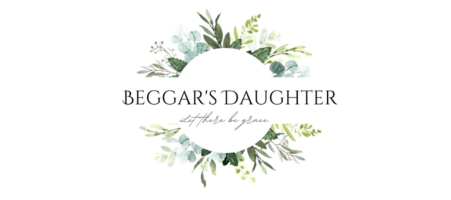My last post addressed the question, “Does God Really Want Me to Save Sex for Marriage?”
In it, I mentioned this book Talking Back to Purity Culture by Rachel Joy Welcher.
I read this book through in January and, now that I’ve finished it, felt it was worth writing a quick review. I do this on occasion and hope to increase the frequency this year.
On that note, I recently redid the resource page! Check it out for a more streamlined collection of books, videos, courses, and groups specifically for women who struggle with pornography. I’m also going to link up all of the book reviews I’ve done over the years, including this one.
For the record, I buy the books I review. No one pays me to do these, so I receive no kickbacks for recommending resources to you other than what I might make through an affiliate link to Amazon. There are no free copies. No special bonuses. Just my honest opinion on whether or not the book I spent my money on is worth you spending your money on.
Let’s look at Talking Back.
I think I might have heard about Talking Back to Purity Culture through one of my connections in this field, but honestly, I don’t remember. I’m in the middle of break from social media (it’s great- I may never go back!) so I can’t check.
What I do remember is being on Amazon one day, probably ordering toddler clothes, and finding this book in my “recommended” section. Obviously, it is a topic I am very interested in and I thought it was neat that a book was written by a fellow female Millennial.
If Rachel wanted to take on the sacred cow that is purity culture, I was going to be right there with her, cheering her on!
Here’s my take in a nutshell: the content is solid; the style is challenging.
Every writer has a style and every reader has a preference. Some people don’t like my style. I’m totally fine with that. I’m a more casual storyteller, and that’s not everyone’s cup of tea, but the books that draw me in are the ones written in a conversational tone. I once heard a professor say, “There’s no such thing as writing that is too long, only writing that is too boring.”
I consider it high praise when one of you writes in and says, “I started reading and I couldn’t put it down. Yours is the first book I read straight through like that!” Because after all, what is the point of writing something if people don’t want to read it.
While I appreciate the depth of some authors, the dryness of near-academic writing makes me hesitate to recommend some resources. This one falls in a gray area, I feel. It will be great for some people and other people won’t be able to connect with it at all. That feels unfortunate, but perhaps it’s the case for any book, even mine.
(To be fair, this doesn’t appear to be Rachel’s “normal” writing voice. Her column over at Fathom magazine seems to be very much conversational and this article on Selfless Sexuality is glorious and dovetails so well with the post I just wrote. So my suspicion, though unconfirmed, is that this book is a literal reworking of her master’s thesis or something similar.)
What Talking Back looks like.
Rachel does a great job at laying out the arguments, and the problems with said arguments, of purity culture. This is a well-researched book. The (formidable) footnotes read like a Who’s Who of the purity movement of the 90s. She has read the books, talked to authors, done her work. Each chapter closes with discussion questions and activities to help facilitate engagement and conversation.
In many places, she lifts quotes directly from decades-old purity culture literature. She lets the books speak for themselves and very graciously asks over and over if this is really the message we want to share with others.
When I first started the book though, I was disappointed. I guess because the title included the words “talking back” I expected more of an argument, a little more sass, maybe. Instead, and this isn’t a flaw, Rachel lays out the facts more like a skilled prosecutor and treats the reader a bit like a jury being left to deliberate and decide.
This could prove a great reference for parents and pastors who grew up in this movement and are trying to figure out how to reframe it for their children and youth. However, it is not something I would just hand to a teenager in hopes that it will influence their mind about anything.
And I have a feeling Rachel would be ok with that. One of the points she makes is that books like this aren’t meant to be read alone. They aren’t meant to be an open and closed case and conversation. That’s one of the pitfalls of “purity movement” books. Parents and churches were just dispensing them to young people and expecting that to be the conversation.
Here’s the book. It will explain everything. Don’t ask any questions. I’m incapable of having this conversation.
Books aren’t meant to be maps that you just throw at people. They aren’t supposed to be the entire conversation. If anything, they are meant to be conversation starters. This book is that, especially as you get deeper into it.
It takes a while to warm up.
After the first two chapters, I turned to my husband, discouraged that this book seemed so dry. It had so much potential, I felt, and I was so sad that it seemed to be lacking the fieriness I was anticipating.
I almost shelved it, but I’m glad I didn’t. It was a slow start, and I feel like Rachel even admits to this in the beginning of the book asking the reader to stick with her. And I can say it’s worth it to do just that.
As you dive deeper into the book, Rachel begins to tackle topics like infertility, same sex attraction, and even divorce. She even mentions pornography addiction among women, which is always going to be a plus in my book.
By the end, instead of wanting to throw the book in the trash, I found myself wanting to slam it shut and spike it into the ground like I just caught a touchdown pass. The last chapter, especially, hammers home the message of grace, which I’m always going to cheer about.
Rachel makes a beautiful point later in the book about the fact that sexual “purity” should not and cannot be separated from the overarching story of the Gospel. That’s a phenomenal point and an area I think we struggle with as a church. We address sex separately from everything else. There’s the Sunday morning sermon and then there’s the hush hush Thursday night youth purity conference. I know this because I’ve been asked to speak at them. It’s rare that I’ve been asked to a speak at a church and share my story with the entire congregation. We treat talking about sex the same as we treat having sex- behind closed doors, in the dark, in the quiet, and tell no one.
The Bible doesn’t do that (Hello, Song of Solomon?) and it certainly doesn’t give us a blueprint for treating sex like something that isn’t impacted by the Gospel, and, consequently, grace.
Overall, if I did stars, I’d give this one 3.5. It’s not horrible, just dry, and definitely not something I would even feel you could walk a teenager through because they don’t have a reference point for it.
However, as a resource for a pastor or a parent who knows purity culture and may even perpetuate it, this book is a gold mine and, I think, well worth your time.






